A look back over three years covering journalism funding in Europe… (Newsletter 026)
It’s hard to believe that this newsletter started three years and 25 issues ago, at the beginning of 2019.
So, if you’ll forgive a little parental pride, today we’re going to look back over those three years, and beyond, to a time before the JFF’s newsletter bestrode the narrow (European journalism funding) world like a (very small, usually monthly) Colossus…
Do send us your feedback at info@journalismfundersforum.com or on social media. And please keep sharing the subscribe link, to help new readers find us.
–Sameer Padania
—
Help! I’m a new media funder!
Where do you turn for advice in Europe if you’re not a specialist in media funding, but you want to learn about funding journalism or media? Maybe you’ve just taken up a new role in philanthropy, or you’ve been given a new portfolio including journalism or media, or you’re a philanthropist wondering whether supporting journalism might be right for you. Maybe you’re wondering what you can do to make your application and reporting process more journalism-friendly, or whether you should switch from providing short-term project grants to multi-year core grants (SPOILER ALERT: you should).
Now, besides the Journalism Funders Forum and its philanthropic funders, you could start by reaching out to, among others:
- European pooled fund Civitates or one of its foundation partners
- members of the Expertisekreis in Germany
- the European Democracy Network in Philea (formerly ECF and Dafne)
- mission-driven investors like MDIF or its partners in Plūrālis
- funders listed on the websites of journalism organisations (start here, here, here or here, for example)
- funders who have shared their journalism and media grants data with 360Giving or Candid
But ten years ago or more, while there were networks focused on international media assistance (like GFMD and FoME), there were no open, transparent networks or fora for journalism funders within Europe – nowhere to join or meet, nowhere to ask or learn, nowhere to confess your ‘f*ck-ups’ (the Bundesverband’s word, not mine…), nowhere to plan or collaborate.
Back then, you could (and some did) seek advice from specialist funders like Open Society’s Media Program or the US-based Knight Foundation, but if you were looking for an accessible and quick guide to learn about how, or, crucially, why to fund journalism, you were fresh out of luck. Now, of course, you can just search for a grantmaking guide on GFMD IMPACT or IssueLab…

All in all, there didn’t really seem to be a European media funding field, and, outside of EU expenditure, a sense of who was spending how much on what.
Meanwhile, in America…
We all know the scale of media philanthropy in the US is much greater than in Europe (Candid estimates US$2.7bn – that’s two point seven billion US Dollars – from 2011-20), but that took concerted, consistent effort over a number of years (you can read our take on that in Newsletter 025, on nonprofit journalism). It’s a place where a venture philanthropy fund for racial equity can aspire to raise $500m, and a coalition of funders can raise and align millions of dollars to reinvigorate a city’s independent media (as in Chicago). It’s a bittersweet thing, looking over from Europe, both inspiring as to what can be done if we try, and a sign of how far we have to go.
What I’d pick out as particularly relevant to JFF members is the value of a dedicated and well-resourced domestic journalism funder like the Knight Foundation, with a willingness to fund not just journalism itself, but also research, policy and field-building work setting journalism within the wider landscape of public interest information and the health of democracy – against a backdrop of cross-pollination with the tech innovation field (Google’s NewsGeist started life as a Knight/Google-funded multidisciplinary O’Reilly unconference, NewsFoo, in Arizona). And there seemed to be a genuine push to bring donors interested in public interest media together: what had begun in 1984 as a loose group of film and video funders, was by 2012 the network we know today, Media Impact Funders.
—
FUNDER INTERVIEW
Soon we’ll bring you an interview with Mary Fitzgerald, who, in her role as Director of Expression at the Open Society Foundations, will be looking to answer the question “how can we strengthen, rebuild, reinvent, reimagine journalism so that it can better hold power to account?“
Coming soon, to a JournalismFundersForum.com near you…
—
Back in Europe…
2016 was, I think, the year media funding in Europe really changed. Yes, of course there was Brexit (and later, Trump, and a widening disinformation and misinformation crisis), giving everybody – philanthropy included – who had taken the state of domestic media for granted an enormous wake-up call.
But something else dramatic happened: at one fell swoop in 2016, Google became, for a while, the largest funder of journalism in Europe through its three-year €150m 662-grantee Digital News Initiative Innovation Fund (run by a core team of 3). Whatever your stance on tech platforms funding the journalism field, this had a galvanising effect on philanthropy – and on journalism’s expectations of philanthropy. Drawing on approaches like design thinking and user-centric design, a new breed of funders and investors in Europe started to try to shift the public interest field in response. In late 2016, for example, Nienke Venema of Dutch foundation Stichting Democratie & Media and Patrice Schneider of mission-driven investors MDIF brought together a global group of journalists, funders, technologists, activists and thinkers for a fifty-expert convening in Italy called Beyond Disruption – leading to this call-to-arms.
Enter the JFF…
Then, in mid-2017, the European Journalism Centre – under then-new Director Adam Thomas – launched the Journalism Funders Forum with a series of national convenings, and research reports, on journalism and philanthropy in France, Germany and the UK. Through these and subsequent pre-Covid convenings – including in Amsterdam, Brussels, Düsseldorf, Perugia, and Paris – the JFF and its collaborators sought to bridge the divide between journalists and funders, and between funders themselves – and always trying to share as much of what was discussed as possible.
By 2018, funders actively wanted to grow the field. I worked with Julie Broome at Ariadne and Michael Jarvis of funder collaborative TAI to create a Journalism Funding 101 for their member funders in the fields of human rights, social justice, transparency and governance. As ‘closing space’ started to spread, human rights funders, and their grantees, were starting to shift how they saw journalism and media: no longer just as a means to get coverage for their topics and campaigns, but actually a critical part of society and democracy without which the health of civil society itself would be affected. Attacks on the media were an attack on civil society too. Originally designed as a publication internal to Ariadne’s membership, they decided to make the guide open-access, for others to take and build/improve on.
A newsletter is born…
When the JFF asked me a few months later to prototype a newsletter for funders in Europe, the thing we were most concerned about was ‘would there be enough to write about in European media philanthropy?’ The one injunction I was given was ‘try to avoid using sources or stories from the US…’
We asked ourselves and the JFF community, including JFF’s funders, what a newsletter on media funding in Europe should focus on. Should we do a digest of funding opportunities, a calendar of events, or a run-down of what major grants had been made? Should we feature key grantmakers across Europe, their grantees, or the journalism they produce? Do readers want one topic or many? An overview or a deep-dive? A short hit or a long read? Should we cover policy and research? No one could agree…
So we experimented with…
– exploring the relevance to European journalism and funding of major global social movements for gender equity and racial equity and economic inequality…
– covering systemic threats to media freedom like media capture…
– unpacking different ways of supporting journalism and media, including through a New Deal, investment, place-based funding, and networks…
– focusing on specific areas of journalism itself, like investigative journalism, or innovation and hybrid media, or nonprofit and charitable journalism…
– a bunch of editions on Covid…
– a series exploring public interest media and how it gets funded in individual European countries: Czechia, France (also in French), Germany, Greece, Ireland, Italy, the Netherlands, Poland, Portugal, Spain and the UK…
– and most recently, a series of long-form interviews with funders and investors of different kinds, including Civitates and Rethink Ireland…
Looking back, what we’ve tried to do with this humble, over-long and densely-hyperlinked newsletter over the past three years is to try to expand the visible surface of what’s happening and what’s possible here in Europe.
At heart, we hope that has contributed to your sense of collective purpose, whatever you do, and wherever you work, to continue to protect, promote and grow the essential and tireless work that journalists across this continent and beyond do to seek the truth, without fear or favour.
Till next time, when we’ll look to the future…
–Sameer
[You can read the emailed version of this edition]
